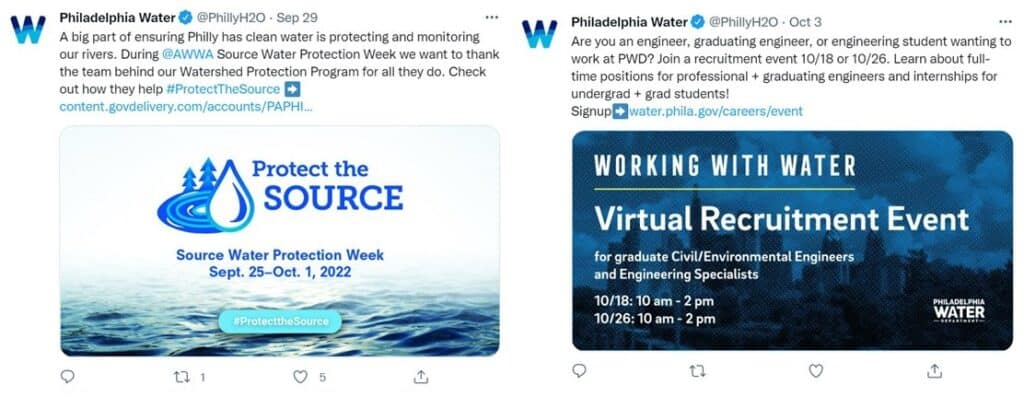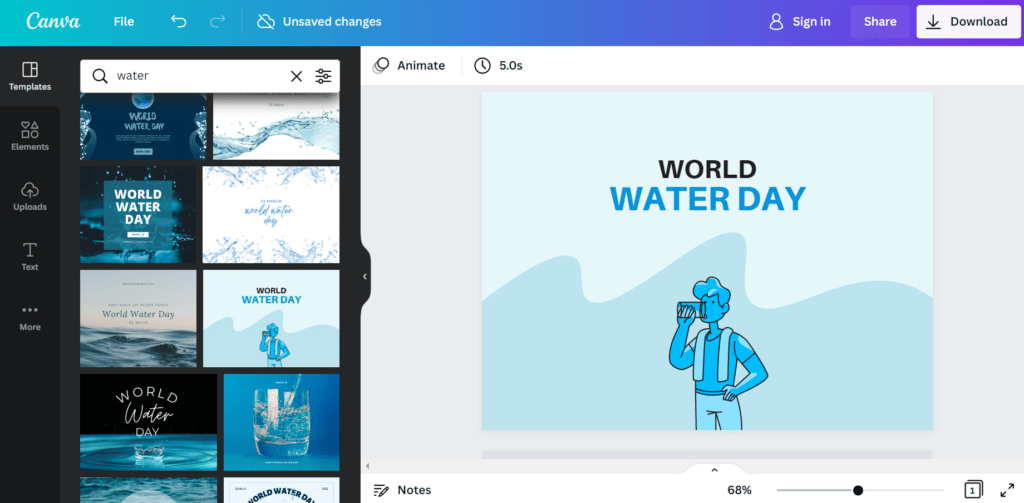Here in the digital age, approximately 7 out of 10 Americans use social media. We connect with our friends, co-workers, as well as businesses or services. If water and wastewater utilities dial in to this unique opportunity of having the digital world at their fingertips, they can build trust, decrease complaints, and grow public support and buy-in for conservation efforts or future rate increases.
Social media marketing is an easy and free way for systems to paint a picture of who they are and how they want to be perceived. By communicating strategically, they can increase transparency and trust, and grow public understanding of why they do the things they do and why the community should care about it. The trick is doing it in a way that is clear and accessible. While people are generally open to learning new information, they don’t often seek it out for themselves. That is why we must package and deliver it in a way that can be easily understood so they can learn about the work being done and trust the people doing it.
Getting Started
Building an online relationship with your customers will take time. Once you create an account for your system, you are not going to see hundreds of followers overnight. This process is a journey, and it will take time and consistency to reach your correct audience.
1. Selecting the right platform
To get started on your system’s social media strategy, you will need to first select which platform to use. There are tons of options available these days and it can seem daunting to manage more than one. Luckily, you only need to choose the platform that your customers use the most. Facebook, for example, has one of the largest audiences among the different platforms, as well as some of the most active, adult, residential users. Instagram, on the other hand, though having the second most active users, has a demographic that tends to be significantly younger.
2. Finding your voice
After you choose which platform is best, you will need to decide what tone to use. Your tone will be your social media personality, or voice. You want to be seen as the trusted water or wastewater authority in your community, but you also don’t want to sound so rigid that your customers start to tune out. Be friendly and authentic while also maintaining a sense of authority and professionalism. Once you decide your tone, you will need to use it consistently.
3. Deciding what to post
Next comes the fun part – posting! This is a great opportunity for your system to share news, updates, tips, videos, and more. Remember, the goal of this account is to build trust and engagement with your customers, while also growing awareness of your system and the great things you are doing. You should start by building familiarity with your audience. Teach them who you are, showcase your operators or projects, share fun facts, or even give tips on how they can save money. This is a fantastic way for you to learn what your customers care about while also showing them you care about those things too.
With so many things being posted on social media every day, your audience’s attention may be hard to capture. To alleviate this, make sure to keep any text posts short, while also sharing content that is visually appealing. Accompanying pictures and short behind-the-scenes videos are a great way for customers to learn quickly while telling your system’s story. When sharing information or tips, you can also create attention-grabbing infographics for free! Services like Canva.com give you an easy and free way to design graphics quickly by giving you a range of templates, fonts, and images to choose from.
Listening
While all of these strategies are important when building an online relationship with your customers, the final way to gain their support is to truly hear their needs and concerns. If you receive direct messages or comments from your audience, respond timely, professionally, and appropriately. You may not always be able to act on every concern, but if you listen, you can see what options are available, and even highlight other issues that they may not realize are important to them.
By taking the time to communicate with your customers through social media, you can build connections that will support you and the work you do well into the future – but you have to get started today.



